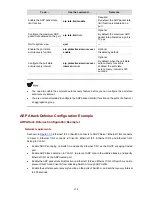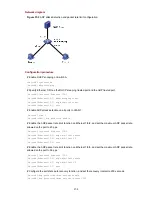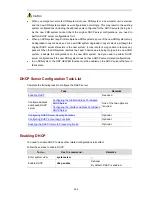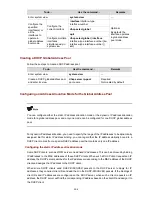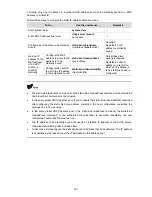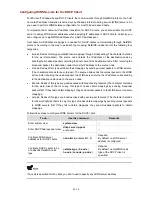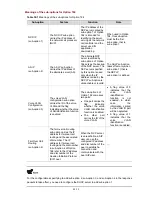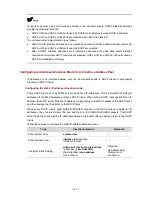
39-3
z
interface will be selected.
est will be selected.
z
If no assignable IP address is available in the selected address pool, the DHCP server will not
lient because it cannot assign an IP address from the parent address
DHCP
ss pools or global address pools to DHCP
clients or client IDs.
3)
4)
address found in a proper DHCP address pool
5) If no IP address is available, the DHCP server queries lease-expired and conflicted IP addresses.
HCP server finds such IP addresses, it assigns them; otherwise the DHCP server does not
XRN
In a
XRN
z
units (including the master unit and the slave units) in a
z
unit, which returns a DHCP-ACK or DHCP-NAK packet to the DHCP client and at
z
are
instead of being delivered to the DHCP server, or being redirected to the master unit by UDP
HELPER. This idles the DHCP server. DHCP packets can be redirected to the DHCP server on the
master unit by UDP HELPER only when the Layer 2 device is upgraded to a Layer 3 device.
3) If there is an address pool where an IP address is statically bound to the MAC address or ID of the
client, the DHCP server will select this address pool and assign the statically bound IP address to
the client.
4) Otherwise, the DHCP server observes the following principles to select a dynamic address pool.
If the client and the server reside in the same network segment, the smallest address pool that
contains the IP address of the receiving
z
If the client and the server do not reside in the same network segment (that is, a DHCP relay agent
is in-between), the smallest address pool that contains the IP address specified in the giaddr field
of the client’s requ
assign any IP address to the c
pool to the client.
IP Address Preferences
A DHCP server assigns IP addresses in interface addre
clients in the following sequence:
1) IP addresses that are statically bound to the MAC addresses of DHCP
2) The IP address that was ever assigned to the client
The IP address designated by the Option 50 field in a DHCP-DISCOVER message
The first assignable IP
If the D
assign an IP address.
Support
n XRN (intelligent resilient framework) system, DHCP servers operate in a centralized way to fit the
environment.
DHCP servers run (as tasks) on all the
Fabric system. But only the one running on the master unit receives/sends packets and carries out
all functions of a DHCP server. Those running on the slave units only operate as the backup tasks
of the one running on the master unit.
When a slave unit receives a DHCP-REQUEST packet, it redirects the packet to the DHCP server
on the master
the same time backs up the related information to the slave units. In this way, when the current
master unit fails, one of the slaves can change to the master and operates as the DHCP server
immediately.
DHCP is an UDP-based protocol operating at the application layer. When a DHCP server in a
fabric system runs on a Layer 2 network device, DHCP packets are directly forwarded by hardw




